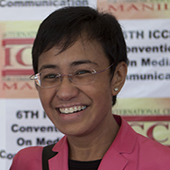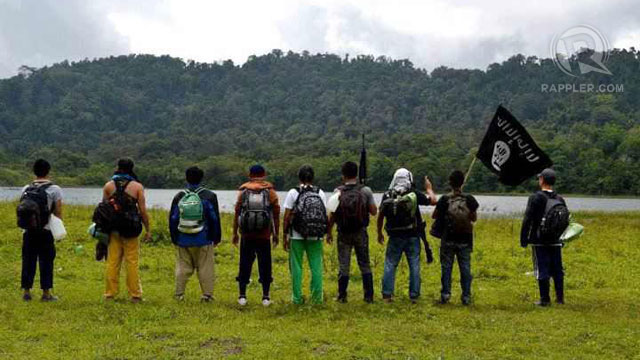I strongly recommend Maria's new book (published this past spring) From bin Laden to Facebook.
V/R
Dave
9/11 and the black flag movement
BY MARIA A. RESSA
POSTED ON 09/11/2013 9:28 PM | UPDATED 09/12/2013 11:45 AM
POSTED ON 09/11/2013 9:28 PM | UPDATED 09/12/2013 11:45 AM
 12 years ago, al-Qaeda attacked and destroyed the Twin Towers, killing nearly 3,000 people. 9/11 was al-Qaeda’s coming out party: a group that harnessed Muslim anger of distinct, disparate groups and framed the battle against the West.
12 years ago, al-Qaeda attacked and destroyed the Twin Towers, killing nearly 3,000 people. 9/11 was al-Qaeda’s coming out party: a group that harnessed Muslim anger of distinct, disparate groups and framed the battle against the West.
While there have been victories, the battle continues, and events in 2012 show how al-Qaeda central has morphed into a social movement that’s making it difficult for military and law enforcement groups globally to reframe a changing threat.
One year ago, a mob stormed the US consulate in Benghazi, Libya and killed 4 Americans, including US ambassador Christopher Stevens, and raised the black flag associated with al-Qaeda — the same flag that appeared in violent Muslim protests around the world.
That week, on the 11th anniversary of 9/11, protests spread to more than 20 countries, resulting in the deaths of more than 30 people. Black flags were raised by angry mobs in countries like Egypt, Tunisia and Yemen.
Al-Qaeda’s Yemeni branch, AQAP (al-Qaeda in the Arabian Peninsula), said the attack in Libya was to avenge the killing of its Number 2, Abu Yahya al-Libi, and urged Muslims to kill US diplomats in Muslim countries.
Abu Sayyaf and the black flag
It was also in September last year that Philippine police discovered a black flag in the Abu Sayyaf camp of Khair Mundos, who carried a US$500,000 reward from the US Department of Justice. Mundos managed to escape.
As early as 1988, al-Qaeda’s financial network in the Philippines was established by Osama bin Laden’s brother-in-law, Mohammed Jamal Khalifa. By then, Al-Qaeda leaders, including the architect of the 9/11 attacks, had trained members of the Abu Sayyaf.
Mundos escaped from a provincial prison in 2007 and headed the Abu Sayyaf group in Basilan. During the raid in 2012, intelligence sources told Rappler that inside the camp, they found the black flag, along with training manuals from Jemaah Islamiyah, once al-Qaeda’s arm in Southeast Asia.
It wasn’t the first time the black flag surfaced in the Philippines, the symbol used by the group behind the latest spate of bombings in Mindanao.
Following the black flag shows how the threat posed by al-Qaeda has evolved since 9/11.
 BLACK FLAG. Filipinos carry the black flag in the southern Philippines. Sourced by Rappler
BLACK FLAG. Filipinos carry the black flag in the southern Philippines. Sourced by Rappler
Symbol of unity
The black flag taps into a secret motivation of al-Qaeda: a “narrative that convinces them that they’re part of a divine plan,” according to former Federal Bureau of Investigation agent Ali Soufan in his book,"The Black Banners: The Inside Story of 9/11 and the War Against al-Qaeda."
Al-Qaeda believes its black banners herald the apocalypse that will bring about the triumph of Islam.
It’s based on what they believe is a hadith or a saying of the prophet Muhammad: “If you see the black banners coming from Khurusan, join that army, even if you have to crawl over ice; no power will be able to stop them, and they will finally reach Baitul Maqdis [Jerusalem], where they will erect their flags.” Khurusan is a name for a historical region covering northeastern and eastern Iran and parts of Turkmenistan, Uzbekistan, Tajikistan, Afghanistan and northwestern Pakistan.
This is where al-Qaeda believes the Islamic version of Armaggedon will emerge. Osama bin Laden’s declaration of war against the United States ends with the dateline, Friday, Aug 23, 1996, in the Hindu Kush, Khurusan, Afghanistan.
Local sighting
(Continued at the link below)
No comments:
Post a Comment